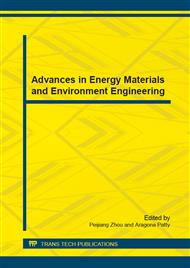p.249
p.253
p.257
p.261
p.265
p.270
p.276
p.281
p.286
Preparation and Properties of Regenerated Sisal Cellulose from a Homogeneous Solution
Abstract:
The sisal cellulose was dissolved in ILs under optimal conditions of 150°C and 400W. The structure of sisal cellulose was changed from cellulose I to cellulose II, accompanied with the decrease of crystallinity through XRD, FT-IR analysis. According to the result of GPC, molecular weight distribution became more uniformly and narrow. This is because intra-and inter-hydrogen bond existed in cellulose were destroyed during the dissolution process in ILs. And the regenerated cellulose possessed better properties than the former, which could broaden the application fields of natural cellulose.
Info:
Periodical:
Pages:
265-269
Citation:
Online since:
December 2014
Authors:
Price:
Сopyright:
© 2015 Trans Tech Publications Ltd. All Rights Reserved
Share:
Citation:


